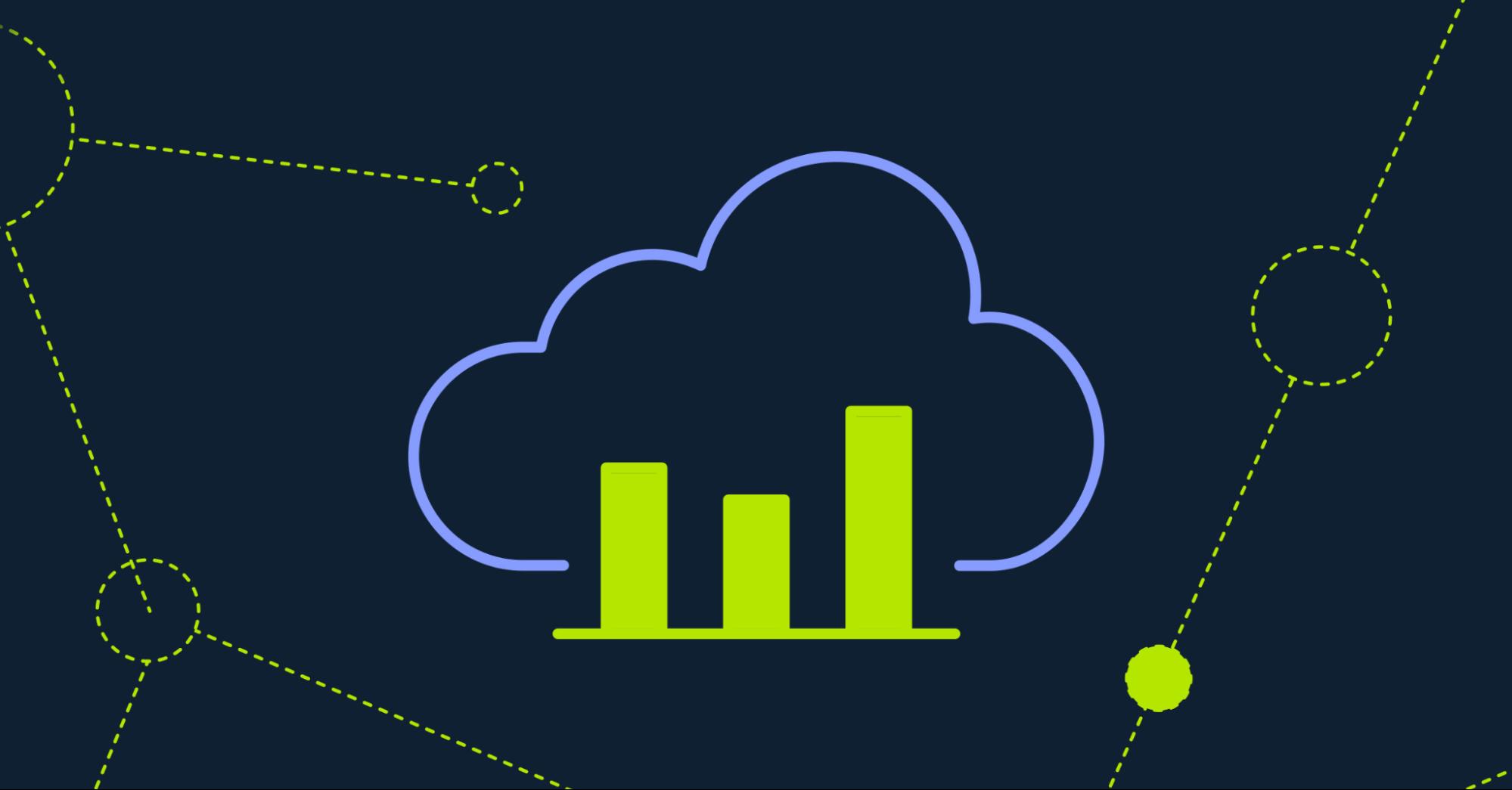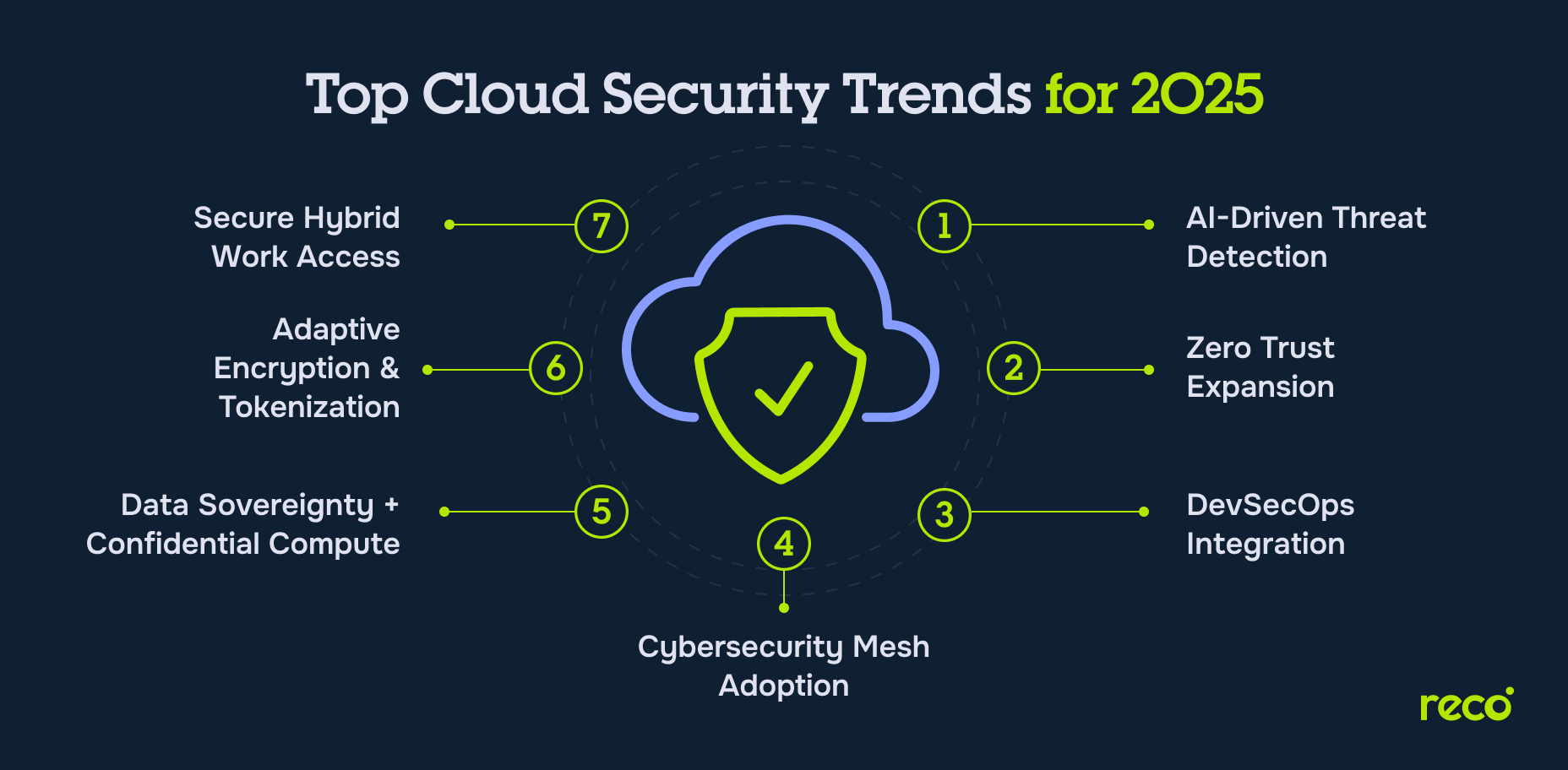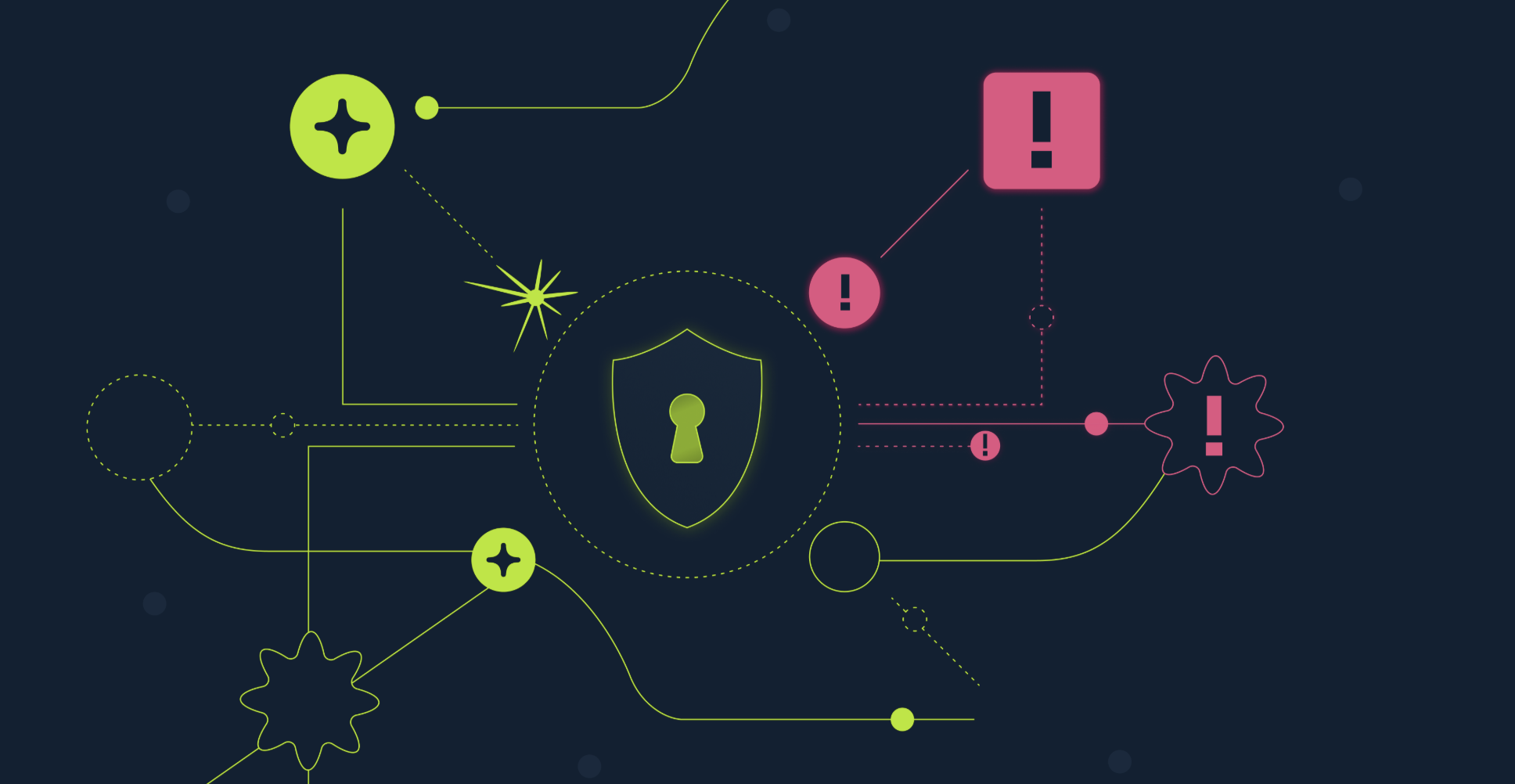Top Cloud Security Trends in 2025: Everything to Know



Cloud adoption continues to accelerate across industries, but so do the risks. In 2024, 80% of companies experienced at least one cloud security incident, and 27% suffered a breach related to public cloud services. These figures reflect a growing disconnect between cloud expansion and the ability to maintain effective security controls. As organizations continue to adopt new SaaS platforms, containerized services, and distributed infrastructure, security teams face mounting challenges in maintaining visibility, enforcing access policies, and keeping pace with increasingly complex environments.
A separate analysis found that 32% of cloud assets are currently neglected, and each asset carries an average of 115 unresolved vulnerabilities. Misconfigurations, excessive permissions, and inconsistent monitoring continue to be common issues across multi-cloud setups. To respond effectively, security teams must shift from reactive fixes to strategic, forward-looking approaches that reflect how threats and architectures are evolving.
7 Key Cloud Security Trends for 2025
As attack surfaces expand in parallel with cloud growth, understanding current cloud security trends is crucial for security leaders seeking to mitigate risk exposure and establish a more resilient posture in the second half of 2025.
1. AI and ML for Threat Detection and Response
AI and machine learning are now central to cloud threat detection and response strategies. These technologies enable real-time analysis of cloud activity to detect anomalies, such as unusual login patterns or unauthorized access attempts, that traditional tools might miss.
Behavioral baselining allows systems to learn what normal operations look like, flagging deviations that may indicate compromised credential use or insider activity. AI also supports automated remediation workflows, reducing the time between detection and response. Additionally, many CSPM platforms now integrate AI to identify misconfigurations and optimize security posture without manual intervention.
2. Expansion of Zero Trust Architectures
Zero Trust Architecture continues to gain traction as the default security model in cloud-first organizations. It replaces implicit trust with continuous verification of identity, context, and device posture, regardless of network location. In practice, this means authenticating users for each resource they access, applying granular access controls, and isolating workloads to prevent lateral movement.
The expansion of Zero Trust is driven by the distributed nature of modern cloud environments, where traditional perimeter controls are no longer effective. In 2025, more organizations are deploying identity-aware proxies, microsegmentation, and continuous authentication mechanisms to enforce Zero Trust at scale.
3. Rise of Cloud-Native Security and DevSecOps
Security is being embedded directly into development workflows through DevSecOps practices. Instead of treating security as a final deployment step, development and security teams now collaborate from the outset. This includes integrating security testing into CI/CD pipelines, scanning Infrastructure-as-Code templates, and enforcing policy-as-code across development stages.
Cloud-native security tools enable teams to secure containers, APIs, and microservices as they are built and deployed. By shifting security left in the development lifecycle, organizations reduce the cost of remediation and improve release velocity without compromising their security posture.
4. Cybersecurity Mesh and Decentralized Enforcement
Cybersecurity Mesh Architecture (CSMA) addresses the challenge of implementing effective hybrid cloud security across highly distributed and multi-cloud environments. Rather than relying on centralized gateways or fixed perimeters, CSMA enforces policies close to each asset or service while maintaining unified visibility and control.
This model allows for more adaptive access decisions, localized threat detection, and dynamic enforcement, all coordinated through a central control plane. In 2025, CSMA is being adopted to standardize security across disparate environments, improve context sharing, and reduce the complexity of managing security controls across cloud providers.
5. Data Sovereignty and Confidential Computing
As regulatory frameworks evolve, especially in the EU, APAC, and Latin America, organizations are under increased pressure to maintain strict control over where and how their data is stored and processed. Data sovereignty has become a core compliance requirement, particularly for sensitive or regulated information. In response, confidential computing is gaining momentum.
This approach isolates data during processing within secure hardware enclaves, preventing it from being accessed by unauthorized processes or cloud providers. Paired with region-specific storage configurations and access controls, these technologies allow enterprises to meet regulatory demands without compromising performance or availability.
6. Enhanced Encryption and Tokenization
Traditional encryption methods are no longer sufficient for the scale and complexity of cloud services. In 2025, organizations are adopting adaptive encryption strategies that apply context-based controls, such as encrypting data based on sensitivity level or regulatory classification. Automated key management, integrated with identity systems, ensures encryption remains enforceable across diverse workloads.
Tokenization is also on the rise, especially in environments where data must be protected during processing. By replacing sensitive values with non-sensitive tokens, this method reduces exposure without affecting application functionality. These approaches are especially critical for organizations handling financial records, healthcare data, or intellectual property.
7. Secure Access for Remote and Hybrid Teams
Remote and hybrid work remain dominant operational models in 2025, requiring cloud security strategies to focus on identity, access, and endpoint context. Security teams are enforcing a set of policies that evaluate device posture, location, time of access, and behavioral patterns before granting access to applications or resources. Identity and Access Management (IAM) platforms have evolved to support adaptive authentication, session monitoring, and granular permission controls based on user risk. Together with centralized access visibility and automation, these controls reduce the risk of unauthorized access while preserving usability and efficiency across distributed teams.

Why Cloud Security is Changing Fast
Cloud environments are evolving faster than traditional security strategies can handle. The pace of change is being driven by architectural complexity, operational decentralization, and rising external scrutiny.
- Multi-Cloud and SaaS Explosion: Enterprises are no longer relying on a single cloud provider or a handful of applications. Instead, they are deploying workloads across multiple IaaS platforms while expanding their SaaS ecosystems at the same time. This results in inconsistent security baselines, overlapping permissions, and tool fragmentation that security teams must untangle in real time.
- Growing Identity and Access Risks: As user access scales across a hybrid infrastructure, identity becomes the most targeted entry point for attackers. The lack of centralized control over user privileges, session context, and federated authentication introduces major exposure. Managing this complexity now requires unified identity governance, risk-based authentication, and real-time access telemetry.
- Compliance and Data Privacy Pressures: Global privacy regulations and regional compliance mandates are tightening. Security teams must prove not only that data is encrypted or segregated, but also that policies are consistently enforced across jurisdictions. This increases pressure to standardize controls across providers and ensure they comply with shifting legal and operational requirements.
Cloud Security Challenges Facing Enterprises
As cloud usage expands, enterprises are running into persistent, structural challenges that limit their ability to maintain effective security controls. The table below outlines four of the most pressing issues security teams face in 2025 and explains why each one continues to pose a significant risk:
Best Practices to Strengthen Cloud Security Posture
Cloud environments demand continuous, adaptive defenses rather than static controls. These best practices form the foundation of a practical cloud security checklist that modern security teams use to strengthen posture across multi-cloud and SaaS ecosystems.
- Implement Least Privilege with Identity Context: Apply granular access permissions based on user roles, device posture, location, and behavior. Identity-aware controls help limit lateral movement and detect credential misuse across hybrid environments.
- Automate Misconfiguration Remediation: Use policy-as-code and automation to detect and correct drift in cloud infrastructure, containers, and SaaS applications. This reduces manual errors and maintains consistent enforcement at scale.
- Use SSPM and CSPM Together for Broader Coverage: CSPM focuses on cloud infrastructure, while SSPM secures SaaS platforms. Running both tools in tandem improves visibility and control across the full cloud stack.
- Conduct Continuous Risk Assessments: Move beyond periodic audits by monitoring risks in real time. This includes tracking key cloud security metrics such as permission usage, configuration drift, and behavioral anomalies that could indicate emerging gaps.
- Align Cloud Security with Dev and Ops: Encourage collaboration between development, operations, and security from the start. Embedding controls in CI/CD pipelines, Infrastructure-as-Code, and production environments ensures faster releases without weakening posture.
What’s Next: The Future of Cloud Security
Cloud security is entering a new era shaped by disruptive technologies and shifting organizational priorities. Security teams are being asked to anticipate threats and build resilience into systems that didn’t exist a few years ago.
Preparing for Quantum-Safe Cryptography
The emergence of quantum computing presents a real threat to classical encryption models. While production-grade quantum systems may still be years away, threat actors are already conducting “harvest now, decrypt later” attacks by intercepting encrypted data with the intent to break it once quantum capabilities mature.
Forward-thinking organizations are beginning to explore post-quantum cryptographic algorithms recommended by NIST and planning for migration paths. This preparation includes inventorying cryptographic assets, identifying high-impact systems, and piloting hybrid encryption schemes that combine classical and quantum-resistant methods.
Securing the AI Development Pipeline
As AI becomes deeply embedded in enterprise platforms, the models themselves are becoming assets that need protection. From prompt injection attacks to model inversion and data poisoning, the attack surface in the AI development lifecycle is growing quickly.
Security teams must now treat AI pipelines like any other high-value system by establishing version control, securing training data, scanning for model exposure, and enforcing access restrictions on generative outputs. This shift requires closer collaboration between data science and security, along with the adoption of tools specifically designed to monitor AI workloads for tampering and misuse.
Evolving Role of the Cloud Security Leader
The cloud security function is evolving from reactive enforcement to proactive design. Security leaders are now expected to partner with product, infrastructure, and compliance teams, not just to implement controls but to shape how systems are built. This means understanding architectural decisions, participating in vendor selection, and contributing to developer enablement.
In future-ready organizations, security becomes a collaborative service, not a gatekeeper. The most effective leaders will be those who can speak the language of engineers and executives alike, translating risks into roadmap decisions.
How Reco Helps Teams Tackle 2025’s Security Threats
Reco enables organizations to address modern cloud and SaaS security challenges by combining context-aware intelligence with real-time action. Here's how each capability contributes to a stronger security posture in 2025:
- Context-Rich SSPM for SaaS Risk Management: Reco continuously maps and evaluates SaaS environments, offering security teams deep context on apps, user behavior, configurations, and exposure. This enables smarter prioritization of risk, including insights into misconfigured settings, third-party integrations, and unused access that could lead to compromise.
- Automated Identity Monitoring and Policy Enforcement: With Reco’s identity intelligence engine, teams can track user activity, flag risky behavior, and apply dynamic policies that adjust based on behavioral and business context. It supports the enforcement of least privilege at scale while reducing manual review cycles.
- Full Visibility into Data, People, and Permissions: Reco provides a unified view of who has access to what, across various SaaS platforms, and under what conditions. This visibility helps eliminate access creep, highlight orphaned accounts, and uncover unmonitored data flows between people and applications.
- Real-Time Alerts and Remediation Workflows: Security teams can configure granular alerts tied to behavior, access changes, or policy violations. These alerts trigger guided remediation workflows that enable teams to respond quickly while maintaining auditability and compliance across all environments.
Conclusion
Cloud security is evolving in real time, shaped by architectural shifts, regulatory momentum, and emerging technologies like AI and quantum computing. Organizations can no longer rely on static defenses or siloed controls. Success in 2025 means building strategies that adapt to complexity without sacrificing clarity.
Security teams must move with the pace of innovation, embedding identity context into access decisions, aligning with development workflows, and maintaining continuous awareness across SaaS and cloud environments. The leaders who prioritize visibility, automation, and cross-functional collaboration will define the next chapter of secure growth in the cloud.

Gal Nakash
ABOUT THE AUTHOR
Gal is the Cofounder & CPO of Reco. Gal is a former Lieutenant Colonel in the Israeli Prime Minister's Office. He is a tech enthusiast, with a background of Security Researcher and Hacker. Gal has led teams in multiple cybersecurity areas with an expertise in the human element.

Gal is the Cofounder & CPO of Reco. Gal is a former Lieutenant Colonel in the Israeli Prime Minister's Office. He is a tech enthusiast, with a background of Security Researcher and Hacker. Gal has led teams in multiple cybersecurity areas with an expertise in the human element.






%201.svg)
















.svg)

